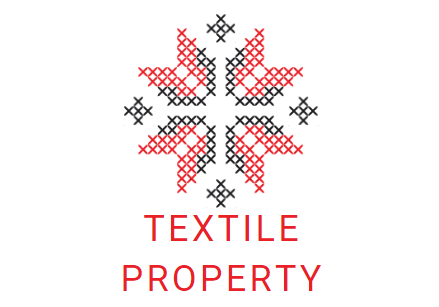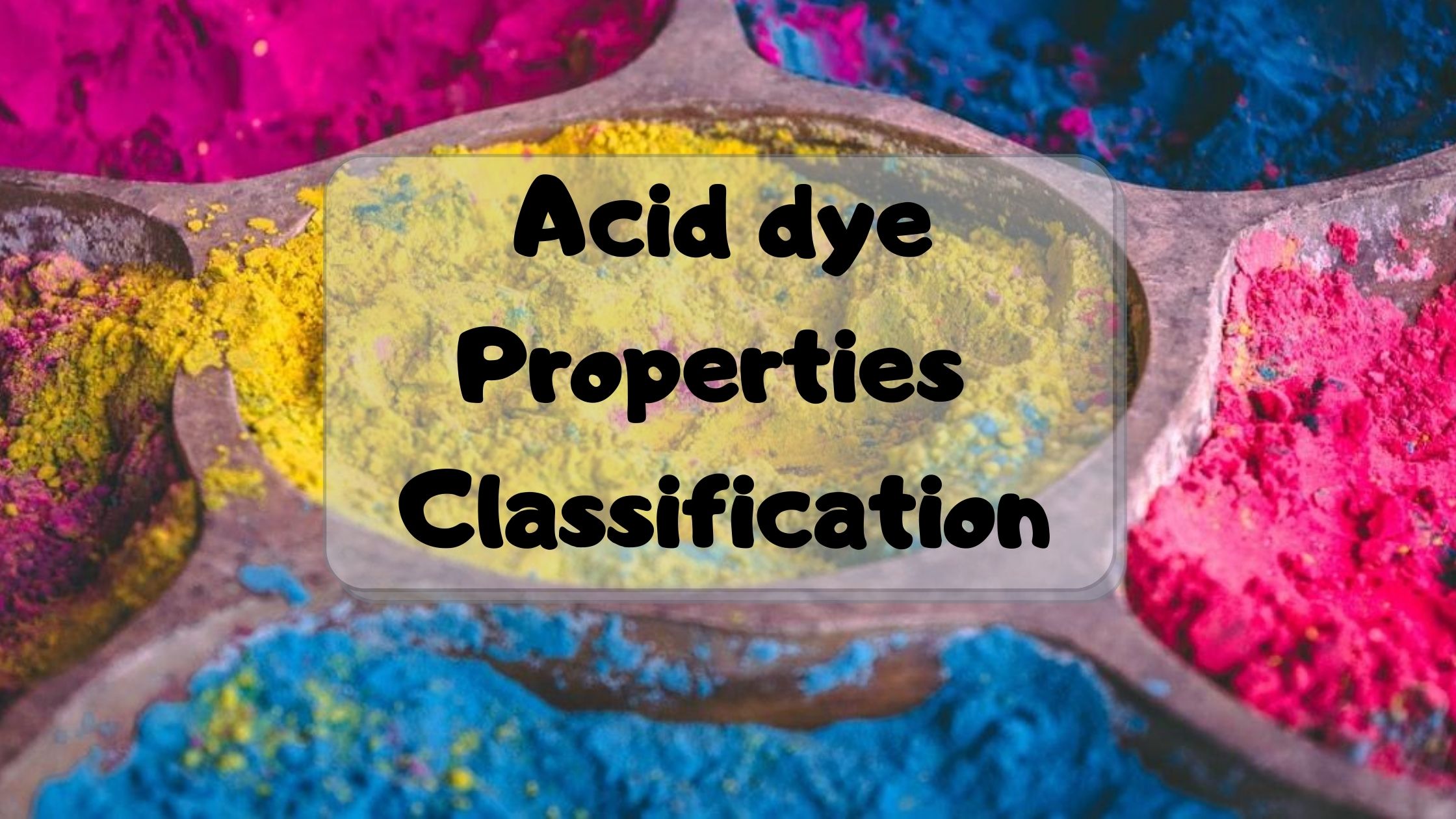Do you know why acid dyes are so called? Mostly acid dyes you will get are carboxylic or sulphuric acid salts. Often they are applied from an acidic bath. That’s why they are called “acid dye”. Though acid dyes possess pretty good light fastness, the wet fastness is not that good.
Properties of Acid dyes
- Acid dyes are anionic in nature
- Suitable for protein and polyamide fiber like silk, wool, nylon
- Acid dyes are applied from acidic to neutral bath
- Light fastness is quite good
- Overall wash fastness is poor
- These dyes are not suitable for cellulosic fiber
- These dyes form hydrogen, van der waals or ionic bond with fibers
Classification of acid dyes
Acid dyes are classified based on-
Acid dyes based on chemical nature
Acid dyes have complex structure. They have sulphonyl or amino group in their structure thus making soluble in water. Most of them belong to the following classes:
- Triphenylmethane type
- Azo type
- Anthraquinone type
Chemically acid dyes are classified as:
- Monoazo e.g. Metanil Yellow and Acid Orange 11
- Nitro e.g. Picric acid
- Nitroso e.g. Napthol Green B
- Triphenylmethane e.g. Acid Magenta
- Xanthene e.g. Rhodamine B
- Azine e.g. Wool Fast Blue EB
- Quinolene Yellow PN
- Ketonimine e.g. Sulfonine Grey G
- Antraquinone e.g. Carbolan Green G
- Phtalocyanine e.g. Coomasssie Turquiose Blue 3G
- Application or dyeing characteristics
Generally, acid dyes are classified based on their dyeing behavior. dyeing behavior is observed especially according to the dyeing pH, wash fastness and migration ability at dyeing. These dyeing behavior is detected according to the sulphonation degree of dyeing molecule as well as the molecular weight of the dye particles.
Acid dyes based on strength
Acid dyes can be classified into four categories according to their strength. Here are they:
(1) Levelling, Strong or Equalizing acid dyes
These dyes can produce mostly levelled shades and so they are known as levelling or Equalizing acid dyes. They possess poor fastness due to their low molecular weight with higher water solubility. These dyes are rapidly absorbed at a pH 2-3 even at 40℃ and applied from a bath containing H2SO4 (3.5%, 168˚ Tw) and Glauber’s salt (10-20%) .
(2) Fast acid dyes
These dyes are usually mono-sulphonated acid dyes. They have higher molecular weight than the typical levelling acid dyes. By using acetic acid (1–3% owf) and Glauber’s salt (5–10% owf), they can easily dye wool. Reasonable migration is seen at boil temperature for these dyes.
Sometimes, a leveling agent is also required for levelness of dyeing. Where level dyeing is necessary, these dyes can be used there. But at the time, when the perspiration and washing fastness of levelling dyes are inadequate then these dyes can be used.
(3) Milling or Weak acid dyes
These dyes have better wash fastness than strong acid dyes. But they do not migrate well and these are fast to milling process imparted to wollen textile thus calling “Milling or weak acid dyes”. Wash fastness of these dyes is good due to high molecular weight of dye rendering low solubility. Levelling property of these dyes is moderate because of affinity of dye anion for fiber is quite high.
(4) Super-milling or Neutral or Aggregated or Very weak acid dyes
Dyes are applied from neutral bath with acid liberating agent, e.g. Ammonium acetate, sulphate or phosphate which liberates acid beyond 80℃ to develop required pH. Dye anion possess higher affinity for fiber at minimum of acid. They are known as super-milling, aggregated or very weak acid dye.
Milling is a process where a wlloen material is treated with considerable mechanical action in mild alkaline solution to promote felting.
Characters of various type of Acid dyes are as follows

Image Source: Basic Principals of Textile Coloration
Dyeing of wool with acid dyes
Wool is a little bit sensitive to alkali. It shows moderate stability up to pH 10. But it shows much better stability in acidic medium. In acidic medium, it shows better stability up to pH 2. Its’ isoelectric point is pH 4.5 to 4.8. This pH is comparatively safer.
Let’s know the parameters for successful wool dyeing:
>Uniform pretreatment
>Levelness of dyeing
>Protection of wool
>Fastness property (Wet and light fastness)
>Anti-setting
>Rot – tip partition
>Spinnability
>Non yellowing effect
Acid dyes have acidic groups in the structure, usually –SO3H. These acid groups react with basic groups present in protein of wool or silk. Thus forming organic salt by salt linkage. Wool exhibits amphoteric properties in solution. No matter acid or basic substances, it can absorb all of them. Depending on pH range, it can either be positive or negative. For wool, the isoelectric region is in the pH range of 4.7 to 7.2.
Typical recipe-
Wetting agent – 0.5 -1.0 g/L
Levelling agent – 1.0 – 3.0 g/L
Wool protecting agent – 2.0 – 4.0 g/L
Dyes – X%
Glauber salt – 10 – 20 g/L
Acetic/ sulphuric acid – 1 – 4 g/L (to maintain pH 4.5 – 5.5)
Temperature – 90 – 100°C
Time – 30 – 50 minutes
M:L – 1:10
Dye solution preparation
Add a little amount of water with dyes and make paste. Then add hot water to stir it. Thus the desirable dye solution is prepared.
Procedure –
- At 40 – 50°C temperature, prepare the dye bath with substrate.
- For maintaining 4.5 -5.5 pH, add levelling agent, acetic acid, salt and other auxiliaries.
- Run the bath for 10 – 20 minutes.
- Add dye solution at pH 4.5 – 5.5.
- Raise the temperature to 90-100°C over 20 – 30 minutes @ 1-2°/minute.
- Run the dye bath for 30 – 50 minutes for dyeing.
- Cool down the bath temperature to 60 – 70°C @ 2 – 3°C/minute
- Drop the dye bath and carry out the after-treatment process.
After-treatment process-
Successive hot and cold wash is given to remove the unfixed dyes from the dyed goods. It is done for improving colorfastness. Then it is treated with a suitable fixing agent.
Dyeing Curve

Image Source: Practice of Textile Coloration
Wrapping It Up!
Acid dye is an important dye class for protein fibers. You can check out our another content on acid dye: Get the perfect mechanism of acid dye

